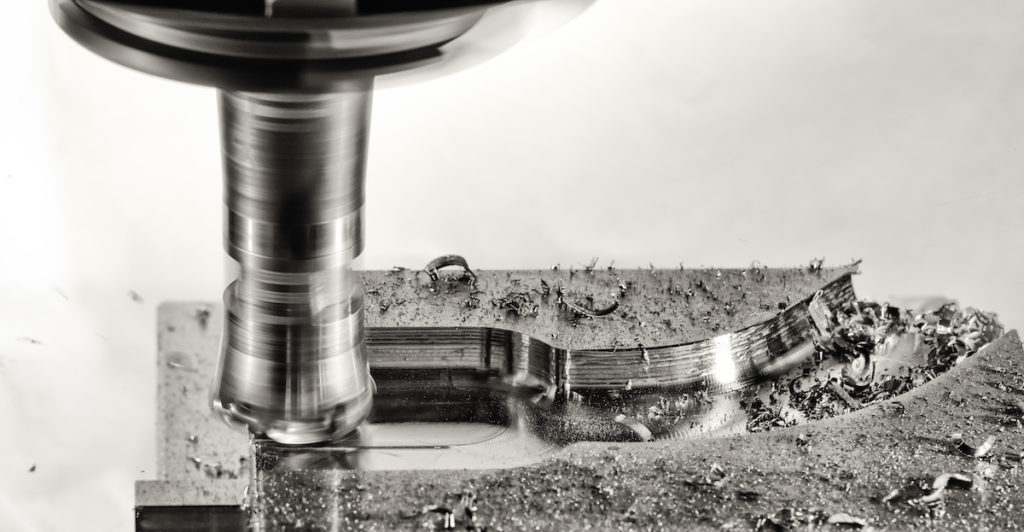Milling- one of the most common processes in CNC machining, most likely because it is so adaptable and flexible. With just a single tool, machine shops can create nearly limitless shapes on the surface of a workpiece. Milling can completely transform a piece of metal stock into a finished part of nearly any complexity.
CNC Milling is a type of machining that uses cutters to shape a workpiece, often on a moveable tabletop or movable cutters. Most milling these days is done by a CNC mill, which utilizes a computer to oversee the milling process.
Types of Milling
CNC Milling can be divided into several subtypes, based on the characteristic being milled, the specific tool being used, and the motion of the cutting tool along the surface of the workpiece. Milling subtypes include:
Face Milling
Face milling is the most common milling operation, and can be performed using a wide range of tools. Cutters with a 45º entering angle are most frequently used, but round insert cutters, square shoulder cutters, and side and face mills are also used for certain conditions.
Shoulder Milling
Shoulder milling generates two faces simultaneously, which requires peripheral milling in combination with face milling. Achieving a true, ninety-degree shoulder is one of the most important requirements. Shoulder milling can be performed by traditional square shoulder cutters, and also by using end milling cutters, long-edge cutters and side and face milling cutters.
Profile milling
When a spinning cutting tool cuts a path along a vertical or slanted surface, the process is called profile milling. Profile milling can be performed in a variety of ways, using a cutting tool that spins around an axis either perpendicular or parallel to the workpiece surface. Profile milling often involves movement around adjacent, non-planar surfaces.
Slot milling
Slot milling forms a channel in the workpiece, often through the use of a disc-shaped cutting tool. However, slot milling can also be performed with a cutting tool that rotates along an axis perpendicular to the workpiece.
Chamfer milling
This milling operation lets us create chamfers, grooves, etc. In case of a regular 3-axis mill, the use of different cutters makes the most sense. These can be dovetail cutters to produce angled grooves or just a mill with a conical cutting head for chamfering.
Thread milling
One way to machine threads into a hole, or onto the outside of a surface, is thread milling. An alternative to tapping, thread milling uses a cutting tool that spins and moves along the surface being threaded. As opposed to tapping, thread milling can create threads on surfaces with a variety of diameters.
The Tools Used for Milling
The milling machine, often referred to simply as a “mill,” is the most basic tool used for milling. Computer numerical control (CNC) milling is responsible for revolutionizing the machine shop, granting the ability to mass produce detailed components faster and with more accuracy than traditional methods.
In the past, machine shops manually moved workpieces between lathes, mills, saws and drills to form a completed part. Today, versatile equipment that can perform multiple processes on the same workpiece offer greater efficiency. Mill/turn centers, for example, combine milling capabilities with turning and boring. CNC technology and 3D software help engineers choose the best strategy to produce precise, accurate machined products as efficiently as possible.


